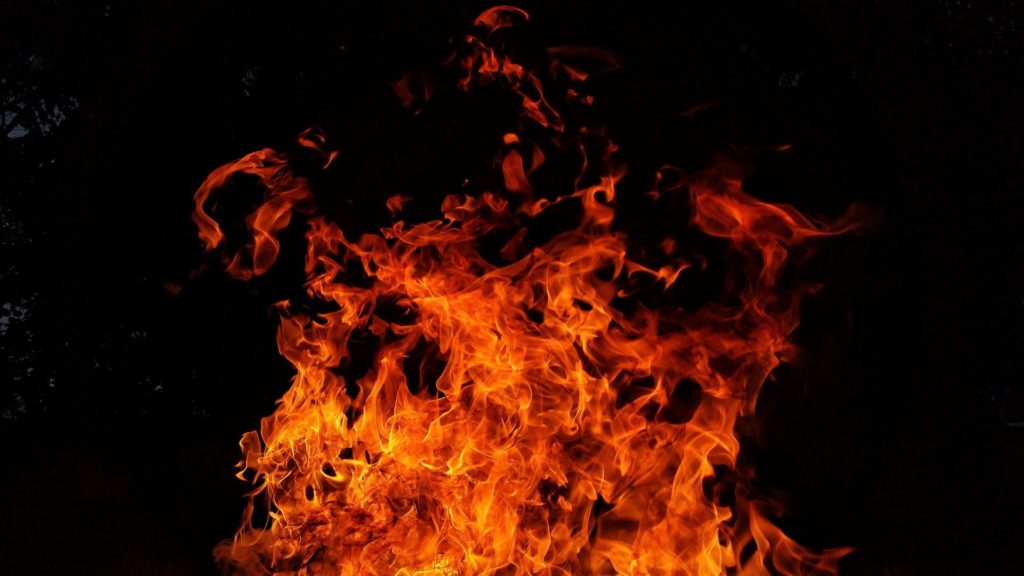Burn Injuries – Know what to do when turkey frying goes wrong!
If you’ve never tried a deep-fried turkey, you don’t know what you are missing out on! In addition to being absolutely delicious, it only takes a fraction of the time to cook as an oven roasted turkey. However, the benefits do come with risk.
According to the National Fire Protection Association when turkey frying goes wrong it causes an average of 5 deaths, 60 injuries, and more than $15 million in property damage each year. So, unless you’ve invited your local Athletic Trainer over for Thanksgiving Dinner, make sure you read below to learn more about the different types of burns and proper first aid to treat burn injuries in the event your turkey frying experiment goes wrong.
For an example of what not to do: Watch this video!
Types of Burns
Classified as first, second, and third degree, appropriate burn treatment will vary depending on the severity and size of the injury.
First-Degree
A first-degree burn is the least severe. Specifically, it occurs when the outer layer of is damaged from touching or picking up a hot object. The skin becomes red at first, and then it eventually dries and peels. Pain from a first-degree burn typically lasts 48-72 hours before subsiding. Another common example of a first-degree burn is a sunburn.
Second-Degree
Second-degree burns happen in the same way as a first-degree burn, but they are more severe. With a second-degree burn, damage occurs to the outer layer of skin, as well as parts of the inner layer of skin. Signs of a second-degree burn include blistering, white blotchy patches on the skin, possibly a deep red color, and the area may look wet and shiny. In addition, there could be swelling, and the area will be painful to the touch.
Third-Degree
Third-degree burns are the most serious and require urgent medical attention. As with second-degree burns, third-degree burns damage both the inner and outer layers of the skin. Visually, the area may look dry and leathery, or the skin may appear charred, black, yellow, white or brown. Interestingly, a third-degree burn is not always painful at the time of injury. This is because of damage to the nerve endings in the area.
BURN FIRST AID FOR MINOR INJURIES
Treat minor burns by cooling the area under running water, or applying a cold, wet compress to the area. If possible, remove anything from the injured area that could restrict circulation such as rings, watches, belts, or tight clothing. Apply a lotion such as aloe vera gel or other skin moisturizer. This will provide some pain relief and help reduce drying and peeling. Cover the area with a sterile bandage and wrap the area loosely with a clean bandage.
If blisters are present, do not pop them. Popping blisters creates an opening in the skin that can become a source of infection. If a blister does pop, gently clean the area with soap and water, apply an antibiotic ointment, like Neosporin, and cover with a bandage to keep it clean. Taking Tylenol or Ibuprofen can help ease the pain and swelling. Always follow the directions on the bottle for appropriate dosing.
BURN FIRST AID FOR SERIOUS INJURIES

If you can see that the level of damage is deep, covers an area greater than 3 inches, or covers the hands, feet, face, groin, buttocks or a major joint, than you need to call 911 and seek immediate medical care. All third-degree burns as well as some second-degree burns, require immediate medical attention.
While waiting for emergency care to arrive, take steps to protect yourself, the patient, and others from further injury. First, ensure the injured person is in a safe area. Next, check the ABC’s – Airway, Breathing, and Circulation. If there is no pulse and the individual is not breathing, send someone to call 911, start CPR and continue until medical help arrives.
AIRWAY – If the person is unconscious, open the airway by putting one hand on the forehead and the other on the patients chin, then tilt the head back while lifting up the chin.
BREATHING – Look to see if the chest is rising and falling with each breath.
CIRCULATION – Check for a pulse on the neck or wrist.
Once you have confirmed that the injured person is conscious and breathing, make sure to remove any items that restrict the injured area such as jewelry or belts. Cover the burned area with a cool, moist bandage or clean cloth, but do not immerse large burns in water. Elevate the injured area, keep the patient warm, and watch for signs of shock until help arrives.
Finally, when planning your deep fried turkey feast, it is a good idea to have a small, well-stocked first aid kit and a fire extinguisher available, and make sure at least one person in your household is CPR trained. If you are not comfortable providing care, or you are not sure what the right course of action is, call 911 or go to your local urgent care or emergency room.
Be safe, give thanks and enjoy your turkey!
Written by: Stuart Schmidt, MS, ATC, CSCS athletic trainer supervisor for The Center Foundation in Bend, OR. Learn more about Stuart HERE.
The Center Foundation provides sports medicine services to young athletes at no charge to the students or their families. We do this by placing certified athletic trainers in local high schools to keep kids safe. Learn more about our work HERE.
[clear][divider]
REFERENCES:
https://www.stanfordchildrens.org/en/topic/default?id=classification-and-treatment-of-burns-90-P01738
https://www.mayoclinic.org/first-aid/first-aid-burns/basics/art-20056649




